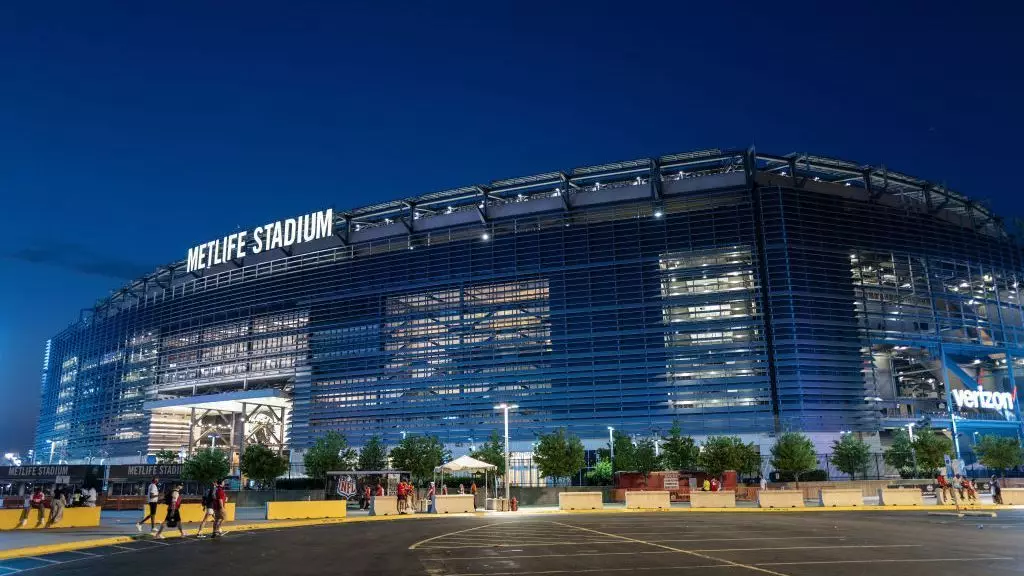The FIFA Club World Cup 2025 promises to be a landmark event in the world of football, with FIFA recently revealing the twelve prestigious venues that will host this highly anticipated tournament. Scheduled to kick off on June 15, 2025, the competition will culminate in an exhilarating final at MetLife Stadium in East Rutherford, New Jersey, on July 13. This ambitious new format will see clubs from across the globe come together in a celebration of the sport, showcasing both established giants and emerging talent from diverse regions.
The Selected Venues and Their Significance
Fans and players alike will experience the thrill of world-class football within some of the most iconic stadiums in the United States. In addition to MetLife Stadium, the lineup includes Mercedes-Benz Stadium in Atlanta, Bank of America Stadium in Charlotte, TQL Stadium in Cincinnati, and the storied Rose Bowl in Los Angeles. Other notable venues include Hard Rock Stadium in Miami, GEODIS Park in Nashville, Camping World Stadium in Orlando, Lincoln Financial Field in Philadelphia, Lumen Field in Seattle, and Audi Field in Washington, D.C.
These venues were strategically chosen not only for their capacity and facilities but also for their geographical diversity, allowing fans from different regions to engage with the tournament. Additionally, this geographical focus on the East Coast avoids overlapping with the 2025 Gold Cup matches, creating a seamless experience for fans and participants alike.
At the heart of this monumental announcement is FIFA President Gianni Infantino, who emphasized the tournament’s role in fostering inclusivity and meritocracy. During his address at the Global Citizen Festival held in Central Park, New York, Infantino articulated a vision for a new era in club football. He positioned the Club World Cup 2025 as the „greatest, most inclusive and merit-based global club competition,“ a statement that rings especially true as the tournament expands from a seven-club format to a more robust 32-team structure.
Infantino’s vision points to greater representation from various continents, including Africa, Asia, Central and North America, and Oceania—a crucial step towards balancing power dynamics in the sport and providing opportunities for clubs that often struggle for visibility on the global stage.
The draw for the tournament is slated for December, generating excitement and speculation among fans and analysts alike. At this time, only two spots remain unfilled: one from South America and one from the United States. With the tournament format expanded to include eight groups of four teams, the anticipation surrounding which clubs will qualify and how they will be seeded is palpable.
However, as we look forward to this thrilling competition, it’s essential to note the logistical complexities mentioned by sources, particularly involving the qualification of the Seattle Sounders. This promotion of Seattle’s Lumen Field as a host venue underscores the intricacies FIFA faces in managing a tournament of this magnitude.
Notably, the announcement has not been without its detractors. Concerns raised by FIFPRO and the Professional Footballers’ Association reveal a growing anxiety over scheduling congestion and increased pressure on athletes. The timing of the tournament has particularly drawn scrutiny, as it overlaps with the typical period allocated for international matches, which has led to significant questions from leagues such as the Premier League.
FIFA’s response to these challenges highlights the complexities of modern football, where the demand for global competition often clashes with established structures and traditions. However, Infantino remains resolute about embarking on this initiative, arguing for the importance of the competition in furthering the growth of club football worldwide.
The FIFA Club World Cup 2025 stands as a beacon of hope for a transformative phase in international football. It promises to deliver an exhilarating display of skill and passion while providing a platform for clubs that have not traditionally enjoyed the spotlight. The tournament beckons fans, players, and organizations to unite in anticipation of a festival celebrating the beautiful game. As we prepare for this historic occasion, the hope remains that it will indeed foster an environment of opportunity, inclusivity, and solidarity—ultimately enriching the global football landscape.


Napsat komentář